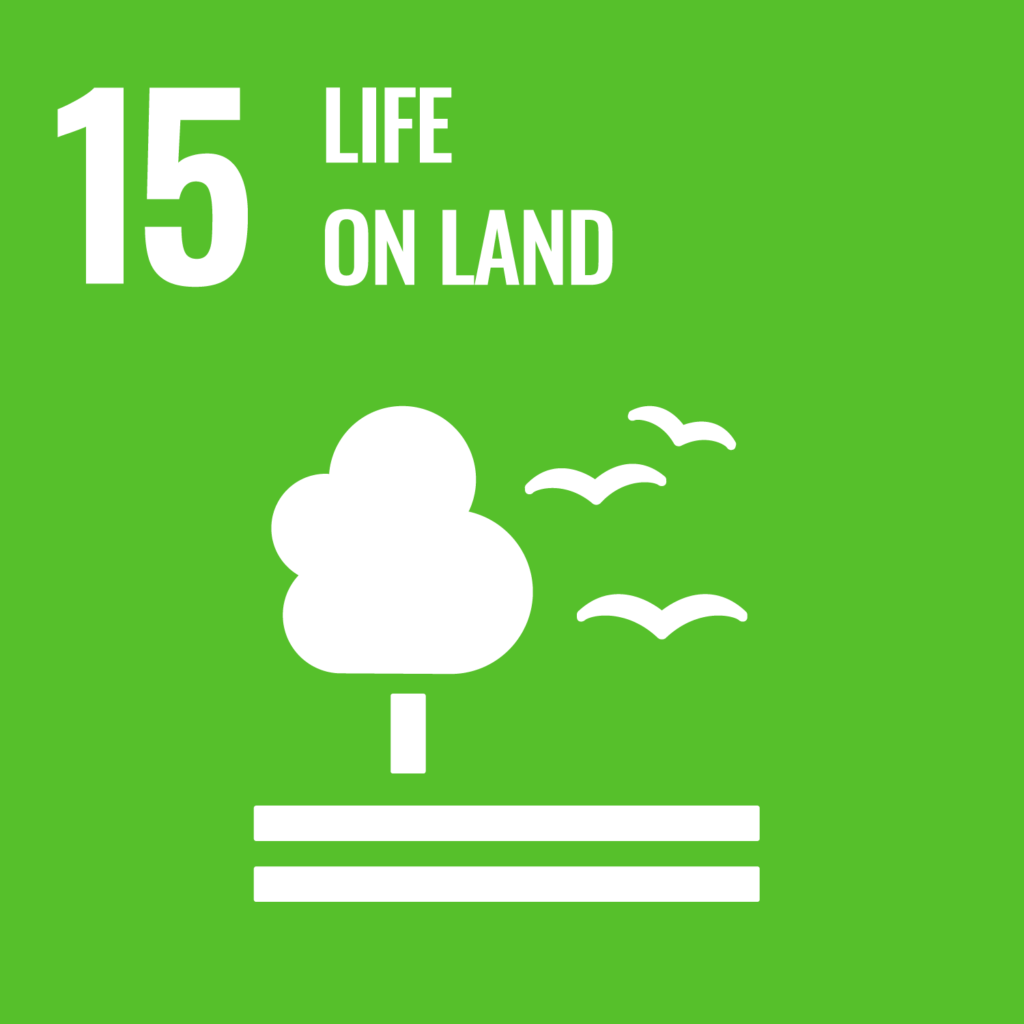
To sustainably manage forests, combat desertification, halt and reverse land degradation, halt biodiversity loss
Goal 15 is about conserving life on land. It is to protect and restore terrestrial ecosystems, sustainably manage forests, combat desertification, and halt and reverse land degradation and stop biodiversity loss.
Earth’s ecosystems are vital for sustaining human life, they contribute to over half of global GDP and encompass diverse cultural, spiritual, and economic values.
However, the world is facing a triple crisis of climate change, pollution and biodiversity loss.
Between 2015 and 2019, at least 100 million hectares of healthy and productive land were degraded every year, impacting the lives of 1.3 billion people.
Agricultural expansion is the direct driver of almost 90 per cent of deforestation. This is in direct relation to our food systems, and oil palm harvesting accounted for 7 per cent of global deforestation from 2000 to 2018.
Global and regional efforts to sustain forest ecosystems as well as their social, economic and environmental functions are essential, in particular for developing countries and the tropics.
We need to shift humanity’s relationship with nature to achieve Goal 15, and realise that nature is the root of our life of earth. The recently adopted Kunming-Montreal Global Biodiversity Framework provides renewed impetus for Goal 15, outlining four outcome- oriented goals to be achieved by 2050 and 23 targets to be achieved by 2030. – Source www.un.org

Targets
15.1 By 2020, ensure the conservation, restoration and sustainable use of terrestrial and inland freshwater ecosystems and their services, in particular forests, wetlands, mountains and drylands, in line with obligations under international agreements
15.2 By 2020, promote the implementation of sustainable management of all types of forests, halt deforestation, restore degraded forests and substantially increase afforestation and reforestation globally
15.3 By 2030, combat desertification, restore degraded land and soil, including land affected by desertification, drought and floods, and strive to achieve a land degradation-neutral world
15.4 By 2030, ensure the conservation of mountain ecosystems, including their biodiversity, in order to enhance their capacity to provide benefits that are essential for sustainable development
15.5 Take urgent and significant action to reduce the degradation of natural habitats, halt the loss of biodiversity and, by 2020, protect and prevent the extinction of threatened species
15.6 Promote fair and equitable sharing of the benefits arising from the utilisation of genetic resources and promote appropriate access to such resources, as internationally agreed
15.7 Take urgent action to end poaching and trafficking of protected species of flora and fauna and address both demand and supply of illegal wildlife products
15.8 By 2020, introduce measures to prevent the introduction and significantly reduce the impact of invasive alien species on land and water ecosystems and control or eradicate the priority species
15.9 By 2020, integrate ecosystem and biodiversity values into national and local planning, development processes, poverty reduction strategies and accounts
15.A Mobilise and significantly increase financial resources from all sources to conserve and sustainably use biodiversity and ecosystems
15.B Mobilise significant resources from all sources and at all levels to finance sustainable forest management and provide adequate incentives to developing countries to advance such management, including for conservation and reforestation
15.C Enhance global support for efforts to combat poaching and trafficking of protected species, including by increasing the capacity of local communities to pursue sustainable livelihood opportunities

